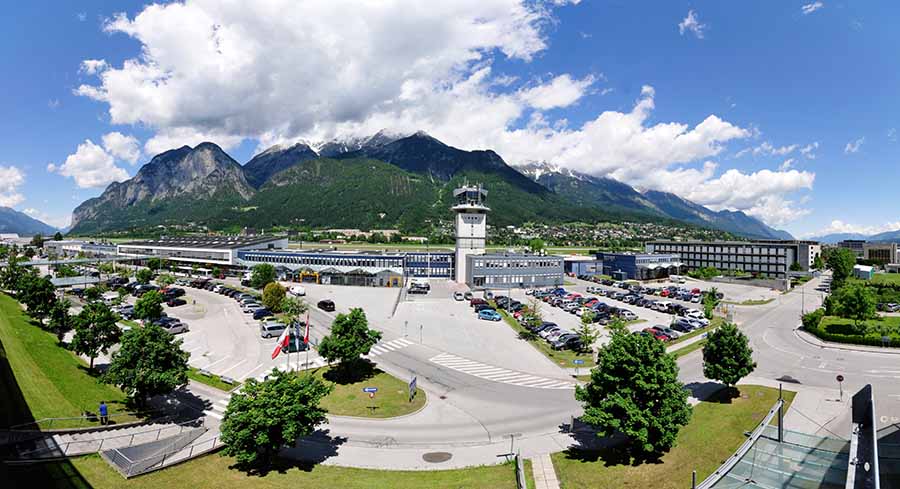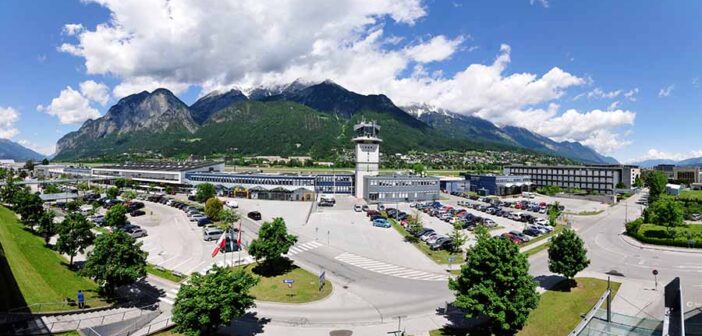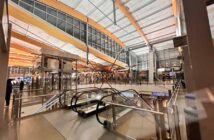
Innsbruck International Airport (INN), located just 4 kilometres from the city centre, offers travellers a compact and efficient entry point to Austria’s Tyrolean region. The airport’s single terminal, built for the 1964 Winter Olympics, is straightforward to navigate, with a clear layout that guides passengers from check-in to boarding with ease.
Arrivals and departures are housed under one roof, with gates 1 to 8 on the ground level and gates 9 to 12 upstairs, ensuring minimal walking distances. The absence of jet bridges means passengers board larger aircraft via mobile stairs, adding a touch of simplicity to the experience. For those with reduced mobility, the airport provides accessible parking spaces across multiple levels of the multi-storey car park, as well as lifts and tailored sanitary facilities, with staff assistance available upon request made 48 hours prior to travel.
Access to Innsbruck is convenient, with multiple transport options linking the airport to the city. The Bus Line F connects directly to Innsbruck Hauptbahnhof (main train station) in approximately 20 minutes, with departures every 15 minutes on weekdays and Saturdays, and every 30 minutes on evenings and Sundays. A single adult ticket costs around £2, with card payments accepted for added convenience.
Taxis, stationed outside the terminal, offer a quick 10-minute ride to the city centre for £10 to £15, while private shuttles provide a tailored option for groups or those with extra luggage. Car rental agencies, including Avis, Hertz, and Europcar, operate on-site, with counters in the terminal for seamless pick-up. The airport’s proximity to the motorway ensures easy road access for those driving, with 450 open-air parking spaces and 1,200 in the multi-storey garage.
The passenger experience at Innsbruck Airport is designed for efficiency, though its small size can lead to challenges during peak periods. Check-in opens 2.5 hours before flights and closes 40 minutes prior to departure, with only three desks available, which may cause queues for larger flights.
Security screening, with just two bays, can take up to an hour during busy times, particularly in winter when ski tourists increase traffic. Travellers are advised to arrive early, especially on weekends, to account for potential congestion. Free Wi-Fi is available throughout the terminal, accessible by selecting the airport’s network and following on-screen instructions. The Tyrol Lounge, located airside on the first floor, offers a comfortable space with snacks, drinks, and workspaces for £34, though it may fill up during peak hours. Additional amenities include ATMs, baby-changing facilities, and a Lost & Found counter in the arrivals hall.
Dining and retail options, while limited, cater to essential needs. The Fly Inn Restaurant on the first floor serves a range of dishes, from light meals to hearty options, while Ruetz Bakery and Caffè Testarossa, both opening at 5 am.
, provide fresh bread, snacks, and coffee for early travellers. Retail includes a duty-free shop, the Airport Shop for travel essentials, and an MPREIS mini-market for convenience items like magazines and snacks. These outlets ensure passengers have access to basic necessities, though the selection is modest compared to larger airports.
On-time performance at Innsbruck is generally reliable for a regional airport, but its alpine location introduces unique challenges. The surrounding mountainous terrain and unpredictable weather, such as Foehn winds, can cause turbulence and delays, particularly in winter. Pilots require special training to navigate the tricky approach, and low cloud cover below 850 feet may lead to diversions to Munich or Verona. Passengers should monitor flight statuses via airline apps or terminal screens, especially during adverse weather. For connections, the airport’s compact size makes transfers straightforward, with no need to re-clear security when moving between gates, though the limited number of flights means connections are often to major hubs like Frankfurt or Vienna.
Potential delays stem primarily from weather-related issues and the airport’s small capacity, which can strain resources during high-traffic periods. Winter weekends, when ski traffic peaks, may see longer waits at check-in and security, and travellers should plan for extra time to avoid stress. Despite these challenges, Innsbruck Airport’s manageable size, accessible transport links, and practical amenities make it a functional and welcoming hub for those exploring the Tyrolean Alps.




